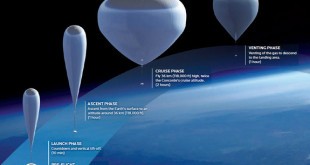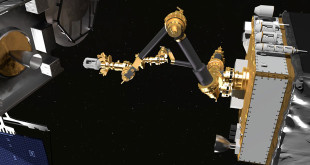Introduction In an increasingly digital world, mission-critical systems are the backbone of our modern infrastructure. From healthcare and transportation to defense and space exploration, these systems ensure that vital operations run smoothly and securely. In today’s digital age, software is the backbone of mission-critical systems. Whether it’s healthcare, transportation, defense, …
Read More »Ascending Horizons: The Evolution of Stratospheric Balloons and High-Altitude Surveillance”
Introduction: Stratospheric balloons, often referred to as near-space balloons, have quietly been making strides in scientific research, meteorological observations, and military applications. These high-altitude balloons are designed to withstand the harsh conditions of the upper atmosphere and have proven to be valuable tools in a variety of fields. In this …
Read More »Understanding the Ongoing Risks of Chinese Smart Devices
Introduction The world of smart devices has revolutionized the way we live, bringing convenience and connectivity to our fingertips. However, the latest information on the risks associated with Chinese smart devices continues to raise concerns. These devices, while often more affordable, come with potential security and privacy risks that users …
Read More »In-Space Robotics: The Frontier of Automated Satellite Servicing and Emerging Dual-Use Concerns
Introduction: In the vast expanse of space, robotic technology has become indispensable for automating various critical operations. One of the most exciting frontiers in space exploration and satellite technology is in-space robotics. These advanced robots are designed to perform tasks in the challenging environment of space, revolutionizing satellite servicing, assembly, …
Read More »Revolutionizing Autonomous Systems at Scale: A DARPA Initiative
In an era where technology is evolving at an unprecedented pace, the Department of Defense (DoD) is taking significant steps to harness the power of Autonomous Systems at Scale. This groundbreaking initiative, under the Open Small Business Innovation Research (SBIR) topic, is aimed at developing cutting-edge autonomous systems that not …
Read More »Quantum Computing’s Vital Role in Missile Defense: A Game-Changer on the Horizon
Introduction Missile defense has always been a critical aspect of national security, protecting nations from potential threats and ensuring the safety of their citizens. In an era where technology evolves at an unprecedented rate, quantum computing has emerged as a groundbreaking tool that could revolutionize missile defense systems. Quantum computing …
Read More »Advancing Law Enforcement Science and Technology Through High-Quality Education, Research, and Collaboration
In today’s rapidly evolving world, law enforcement faces complex challenges that demand innovative solutions. Science and technology have become indispensable tools in the hands of those tasked with maintaining peace and order in our communities. Law enforcement agencies play a vital role not only in holding offenders accountable but also …
Read More »Quantum Crypto Mining: The Future of Secure and Efficient Cryptocurrency
Introduction Cryptocurrency has revolutionized the world of finance with its decentralized nature and the promise of financial freedom. However, the growing popularity of cryptocurrencies has also attracted cyber threats and security concerns. As a response to these challenges, the world of cryptocurrency mining is undergoing a transformation with the integration …
Read More »Powering the Future of Lunar Exploration: Energy Technologies for Moon Bases and Resource Utilization
Introduction In the midst of the global space race, the Moon has emerged as a pivotal destination for countries and private enterprises. The allure lies in its potential for establishing Moon bases, harnessing its mineral resources, and tapping into the vast reserves of helium-3 for future nuclear fusion power plants. …
Read More »How AI Will Facilitate Future Scientific Breakthroughs and Innovation
Introduction Artificial Intelligence (AI) has already revolutionized various industries, from healthcare to finance, and now it’s poised to transform the world of scientific research and innovation. With its remarkable capacity to process massive datasets, identify patterns, and generate insights, AI is becoming an invaluable tool for scientists across disciplines. In …
Read More » International Defense Security & Technology Your trusted Source for News, Research and Analysis
International Defense Security & Technology Your trusted Source for News, Research and Analysis



